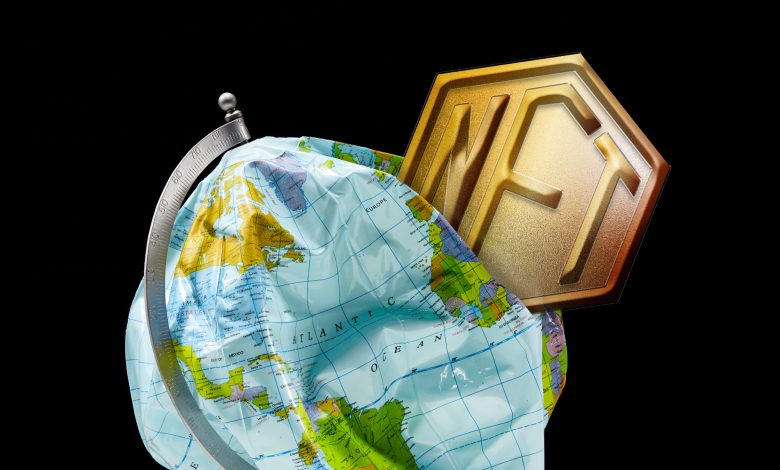How NFTs contribute to technological advancements one trend at a time

NFTs as a sector cemented their existence in the face of the fast-paced growth of technological advancements in today’s time. Their use cases have consequences in real-world applications. The implementation is discovering the gray area of the pros and cons. Thus, providing space for opportunities for more growth and evolution. The NFT fever spread across the globe – India was no exception. The Indian NFT marketplaces are trailblazing in all the important regards of the sector’s innovation and economic contribution.
Relevance of NFTs
The sector has integrated and deployed many nuances in working models of various other industries – applications of which hold their own ‘working’ revenue model in reality. But, being digitally native and monetizable in a decentralized landscape, their scope to adopt new technologies and entities are achievable, unlike others. The digital trade platform started with trading digital assets – assigned a monetization value. The security of the assets relies on the metadata linking the ownership of the assets stored on the blockchain.
Digital asset trading influenced and encouraged the integration of various use cases using the already established peer-to-peer communication and decentralized platform. Many of the advancements in the NFTs can be credited to the sector being decentralized. This provides more flexibility and surety in the monetization of the assets, refutable in the face of scams or loopholes.
Internet of things
The internet of things (IoT) is its own field of study that has gathered its own crowd of attention in the background. Today many, if not all, of the progress in technology rely on user data. Shared across all the smart devices, which in the current day means any of the appliances that can be connected to the internet. These data are resolute.
Intersectionalities in NFTs
Web3 or intelligent web is the newest development with its ideation in the blockchain, just as the NFTs.
This shines a light on the possibilities blockchain possesses. They are the future in the tech furtherance, acting as the breeding ground for all these technologies to interact and overlap.
These intersectionalities within the blockchain, with the online decentralized repository of data helping them visualize and enhance the human experience – be it through monetization, quality control, executive freedom in the online presence for each individual, and the superficial lengths of how the tech itself could grow and evolve.
The unraveling of the possibilities in the division in this precedent is limitless and something that should be further explored. Let’s explore further into what entails all-important blockchain technology.
Blockchain in its full glory
Blockchain is the online ledger that started as a safe space for the exchange and transaction of currency through the internet. The phenomenon of blockchain started in the late 2000s. The platform provided space for monetary wealth generation with the internet of things. It was immediately saturated with the stock trade and investment sector taking over the technology. There were more ups and downs through the rough years of financial recessions and escalations, but the sector kept on.
Blockchain gave birth to many of the new technologies we’ve come to depend on. Cryptocurrency – starting with “Bitcoin,” it branched across many industries that eventually found their dedicated revenue model in it. As time matured, the rise of dedicated enterprises which had their whole existence rooted in the working of the blockchain came about. Government, automotive, healthcare, banking, insurance, retail & consumer goods, and much more found their second home.
Intelligent web & monetization of content
The introduction of web3 residing on the blockchain gave birth to social interaction through the online realm.
And as a result, gave way to an intelligent interactive medium age with sharing and learning on the shared metadata transferred across the internet.
Blockchains also evidently gave way to monetize this data. Individuals can now weaponize their data on the blockchain as NFTs to be shared on-demand.
A best-case example is the healthcare industry which relies on the shared network of data.
Now, instead of easily giving in to the power dynamics of conglomerates like healthcare, people can create a passive revenue stream for access to their data.
This aspect of monetizing translates to almost every major industry that depends on the shared network of metadata and data.
Metaverse, crowdfunding, & other advancements in the NFT front
Another area in which NFTs excel is at metaverse – gaming, digital art, etc.
Augmented reality is the future of immersive gaming and entertainment. Now, players can create revenue from the “play to earn” module deployed by the creators or businesses.
This way, both parties can control and deploy a revenue stream running with existing smart contracts drawn.
The smart contracts help with royalties percentage every time an asset is traded, creating passive income to the creator even after selling the piece or project.
NFTs are useful for fundraising for charities, community, and fractional asset crowd raising – elements of real estate can be implemented in the FA.
The future in the sector
NFTs are highly timely and opportunistic to be dealt with, especially now. Through their use scenarios housing a multitude of sectors and individuals – it somehow manages and makes room for more. With active participation, take part in the sector and start creating marketplaces with your monetizable content. Trading & investing in influential marketplaces like Beyondlife.club, Opensea, Rarible, Warix, etc. Some function as gas-free NFT marketplace until the NFT on the platform is sold, which puts you above the mix.
Read More: Build A Successful Digital Platform By Incorporating NFT Marketplace Features.





